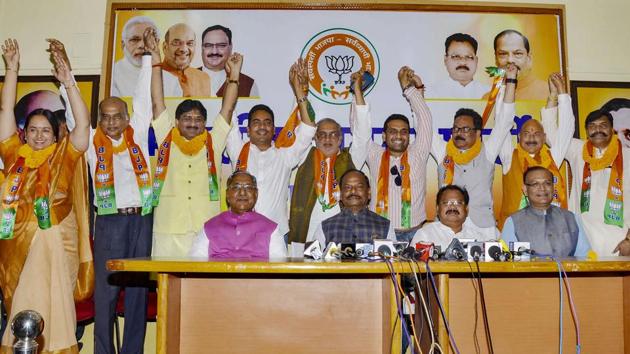BJP faces pressure to repeat 2014 Lok Sabha performance in Jharkhand polls
Previously, BJP won 11 Lok Sabha seats (of 14) on its own and had a lead in 57 ACs. Its alliance partner, All Jharkhand Students’ Union Party (AJSUP) won one and had a lead in six ACs.
The Election Commission of India on Friday announced elections to the legislative assembly of Jharkhand, polling for which will be held in five phases between November 30 and December 20, and the results declared three days later on December 23. This will be the fourth assembly election in the state after it was created in 2000. No party has been able to get a majority of its own in the 81-member Jharkhand assembly in any of the previous elections.

An assembly constituency (AC) wise breakup of the 2019 Lok Sabha results suggests that the BJP should easily get a majority in the Jharkhand assembly. It won 11 Lok Sabha seats (of 14) on its own and had a lead in 57 ACs. Its alliance partner, All Jharkhand Students’ Union Party (AJSUP) won one and had a lead in six ACs. The combined vote share of the BJP and the AJSUP was 55% in these elections.
To be sure, the Lok Sabha results might not be repeated in assembly elections. Even in the 2014 Lok Sabha elections, the BJP won 12 out of 14 Lok Sabha seats in the state, but it won only 37 seats in the assembly elections held later that year. Even in the Maharashtra and Haryana assembly elections held last month, the BJP has not been able to replicate its Lok Sabha 2019 performance. (See chart 1)
The Jharkhand elections will also hold a lot of significance for opposition parties. As of now, the major opposition parties Congress and Jharkhand Mukti Morcha (JMM) have not announced an alliance for the assembly elections. These two parties formed a grand alliance that also included the Rashtriya Janata Dal, the Jharkhand Vikas Morcha and others to take on the BJP in the 2019 general elections.

The grouping could not prevent a National Democratic Alliance (NDA) sweep in the state; the BJP-led alliance won 12 Lok Sabha seats. It remains to be seen whether the opposition alliance falls out like it did in the 2014 assembly elections or remains intact.
According to the fourth National Family and Health Survey (NFHS) conducted in 2015-16, about 28% of the state’s population comprises of Scheduled Tribes (STs), while another 49% are from Other Backward Classes (OBCs). A post-poll analysis of the 2019 general elections by the Centre for the Study of Developing Societies and Lokniti found that the BJP-led NDA enjoyed support from voters across caste groups. For instance, more than 60% of upper caste voters, Hindu STs and OBCs voted for the NDA. Also, 46% voters of the Scheduled Caste community, which comprises about 12% of the state’s population, voted for the alliance. (See Chart 2)






